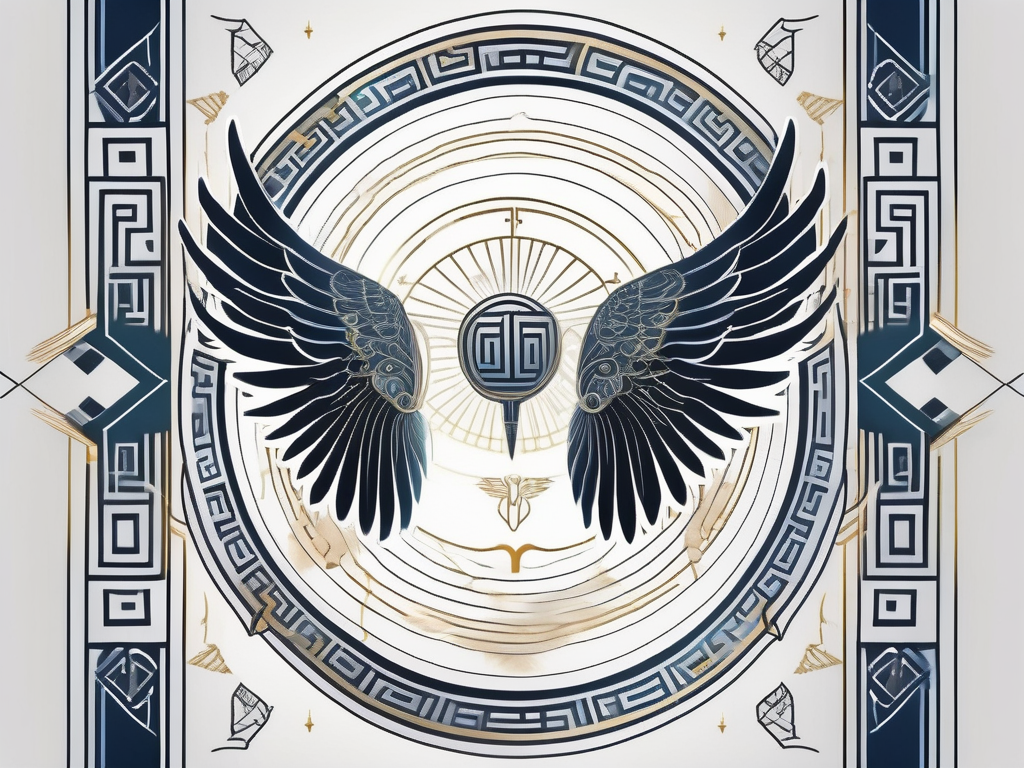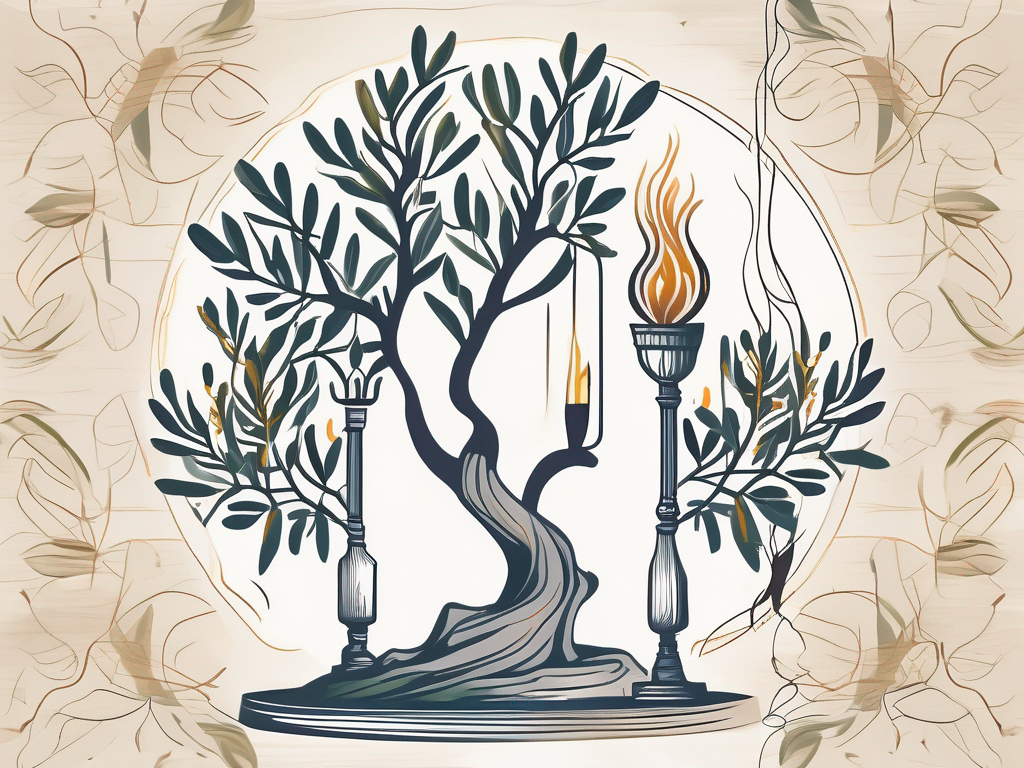The ancient Egyptian mythology is filled with fascinating deities, each with their own unique characteristics and stories. Among these gods and goddesses, one figure stands out, captivating the imagination of both ancient and modern minds alike. She is the winged goddess who veils herself in mystique, known to the Egyptians as Isis. In this article, we will delve into the various aspects surrounding the enigmatic persona of the winged goddess, exploring her mythology, role, iconography, worship, and lasting legacy.
Unveiling the Identity of the Winged Goddess
Who is Isis? What parts did she play in ancient Egyptian religion and society? To better understand the intriguing nature of this goddess, let’s first explore her mythology. As one of the most prominent deities in the pantheon, Isis possesses a rich and complex backstory. She is hailed as the daughter of the earth god Geb and the sky goddess Nut, making her a powerful figure from birth. Throughout Egyptian mythology, she is also often associated with magic, healing, and motherhood.
Wings play a significant role in the symbolism surrounding Isis. These ethereal appendages suggest a connection to the divine and the ability to travel between realms. In ancient Egypt, wings symbolize divine power, representing the ability to transcend earthly limitations. By gracing Isis with wings, the Egyptians emphasized her divine nature and the extraordinary essence of her being.
But what do these wings truly represent? Beyond the surface symbolism, wings are a manifestation of Isis’ multifaceted character. They embody her role as a protector and guide, enabling her to watch over and assist those in need. With her wings, Isis can swiftly navigate the celestial and earthly realms, offering her aid wherever it is required.
Furthermore, wings symbolize the transformative nature of Isis. Just as a caterpillar transforms into a butterfly, Isis represents the journey of personal growth and spiritual evolution. Her wings serve as a reminder that change is not only possible but necessary for growth and enlightenment.
In addition to her divine attributes, Isis is also revered as a goddess of magic. Her wings, in this context, represent the power of transformation and metamorphosis. Through her mastery of magic, Isis can shape-shift, taking on different forms to achieve her goals. The wings, therefore, symbolize her ability to transcend boundaries and manipulate reality.
Moreover, wings are often associated with freedom and liberation. In ancient Egyptian society, where social hierarchies and restrictions were prevalent, Isis’ wings represented the freedom to rise above limitations and embrace one’s true potential. By embodying the essence of freedom, Isis became an inspiration for individuals seeking liberation from societal constraints.
It is worth noting that the depiction of Isis with wings is not unique to ancient Egypt. Similar representations of winged goddesses can be found in various cultures throughout history. The motif of wings transcends geographical boundaries, suggesting a universal fascination with the divine and the desire for transcendence.
In conclusion, the wings of Isis hold a multitude of meanings and symbolisms. They represent her divine nature, her role as a protector and guide, her transformative power, and her association with magic and freedom. The inclusion of wings in her depiction elevates her status as a goddess and emphasizes her connection to the celestial realm. Through the symbolism of wings, Isis continues to captivate and inspire individuals to embrace their own divine potential and strive for spiritual growth.
The Role and Influence of the Winged Goddess
As an essential deity in Egyptian religion and culture, Isis held great significance in the lives of the ancient Egyptians. She was venerated as the goddess of fertility, motherhood, and wisdom, embodying the ideals and virtues that the Egyptian society cherished. Moreover, her presence permeated various aspects of daily life, influencing everything from fertility rituals to funerary practices.
Isis’s impact on ancient Egyptian society extended beyond her role as a goddess. She was revered as a protector and nurturer, safeguarding the well-being of individuals, families, and the entire kingdom. Her worshipers sought her guidance and blessings in matters related to fertility, love, and the general sustenance of life. The reverence for Isis was so profound that numerous temples and shrines were erected in her honor.
One of the most prominent symbols associated with Isis is her wings. Representing her ability to transcend earthly limitations, the wings of Isis were believed to grant her the power to travel between the realms of the living and the dead. This ability made her a crucial figure in funerary practices, as she was believed to guide the souls of the deceased to the afterlife.
Isis’s wings were also seen as a symbol of protection. It was believed that she would use her wings to shield her devotees from harm and bring them comfort in times of distress. This belief led to the inclusion of winged depictions of Isis in amulets and talismans, which were worn by individuals seeking her divine protection.
Furthermore, the wings of Isis were associated with her role as a goddess of fertility. It was believed that her wings carried the life-giving breath of the divine, ensuring the fertility of the land and the prosperity of the people. This association made her a central figure in fertility rituals and ceremonies, where her wings were invoked to bless couples seeking to conceive and ensure the abundance of crops.
Isis’s wings also symbolized her wisdom and knowledge. As a goddess of wisdom, she was believed to possess great insight and understanding of the mysteries of the universe. Her wings were seen as a representation of her ability to soar above mortal limitations and gain a higher perspective on life’s complexities. This aspect of Isis’s symbolism made her a revered figure among scholars and seekers of knowledge.
In conclusion, the winged goddess Isis played a multifaceted role in ancient Egyptian society. From her position as a goddess of fertility and motherhood to her role as a protector and guide, Isis’s influence extended to all aspects of life. Her wings symbolized her ability to transcend earthly limitations, offering protection, fertility, and wisdom to her devotees. The reverence for Isis and her wings is a testament to the profound impact she had on the lives of the ancient Egyptians.
The Iconography of the Winged Goddess
To better envision the image of Isis, we must explore the various depictions of her in ancient Egyptian art and hieroglyphs. Artists and scribes portrayed her as a woman with outstretched wings, symbolizing her divine qualities. These representations often incorporated other significant symbols, such as the solar disk or the ankh emblem, adding layers of meaning to her iconography.
Over time, the imagery and representation of Isis also evolved, adapting to the changing cultural and artistic trends of ancient Egypt. As the mythos of Isis expanded, so did her iconography, incorporating additional elements that emphasized her connection to nature, magic, and fertility. It is through these artistic representations that we gain a glimpse into the rich tapestry of beliefs and ideas surrounding the winged goddess.
The Worship and Rituals of the Winged Goddess
Temples and shrines dedicated to Isis served as sacred spaces where her worshipers would gather to pay homage and seek her favor. These awe-inspiring structures stood as a testament to the profound devotion the Egyptians held for the winged goddess. Within these sacred spaces, rituals and ceremonies took place, allowing the worshipers to connect with the divine and to seek blessings for their desires and needs.
The rituals and ceremonies related to Isis often incorporated elements of magic, prayer, and offerings. These practices aimed to invoke her assistance in matters of fertility, protection, and guidance. By engaging in these religious acts, the ancient Egyptians sought to establish a direct connection with the winged goddess, forging a bond that transcended the mortal realm.
The Legacy of the Winged Goddess
Isis’s influence extends far beyond the boundaries of ancient Egypt. Her fame and fascination have endured throughout the centuries, captivating the hearts and minds of individuals across various cultures and spiritual traditions. In modern culture and spirituality, the winged goddess serves as a symbol of feminine power, magic, and wisdom.
Today, the allure of the enchanting Egyptian goddess with wings continues to inspire artists, writers, and spiritual seekers worldwide. Her symbolism, mythology, and elements of her worship have found their way into various forms of art, literature, and spiritual practices. As we explore the legacy of Isis, we come to appreciate the profound impact she has had on humanity’s perception of the divine feminine and the mysteries of the universe.
The Enduring Fascination with the Winged Goddess
The allure of Isis and her winged form remains as strong today as ever. The mysteriousness and beauty of this goddess continue to ignite the imagination of those who seek to unravel her secrets. As we journey through the realms of history, mythology, and spirituality, we are reminded of the timeless appeal and enchantment that the Egyptian winged goddess holds.
In conclusion, the winged goddess Isis stands as a captivating figure, celebrated and revered in ancient Egypt and cherished even in the modern world. Her mythology, symbolism, role, and worship intertwine, creating a tapestry of the divine and the mortal. Through exploring the various aspects of Isis, we gain a deeper understanding of the multifaceted nature of ancient Egyptian religion and culture. And in turn, we continue to be enchanted by this captivating Egyptian goddess with wings.












